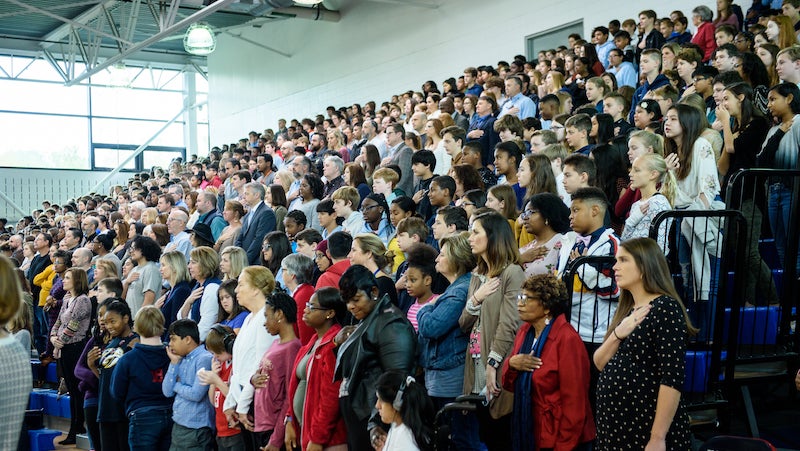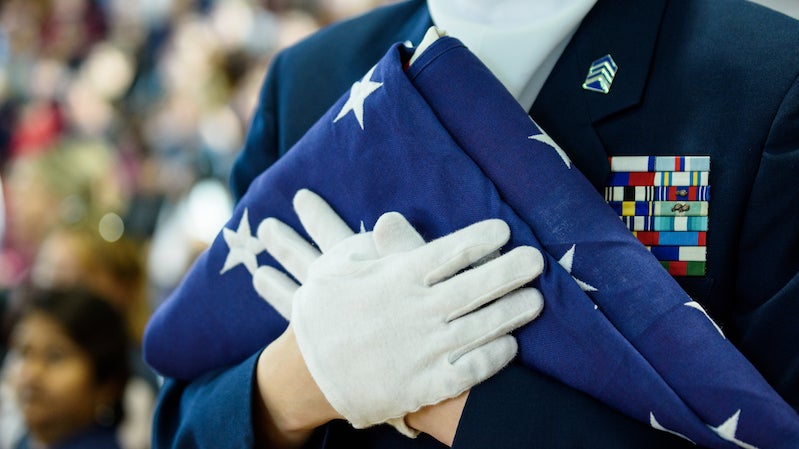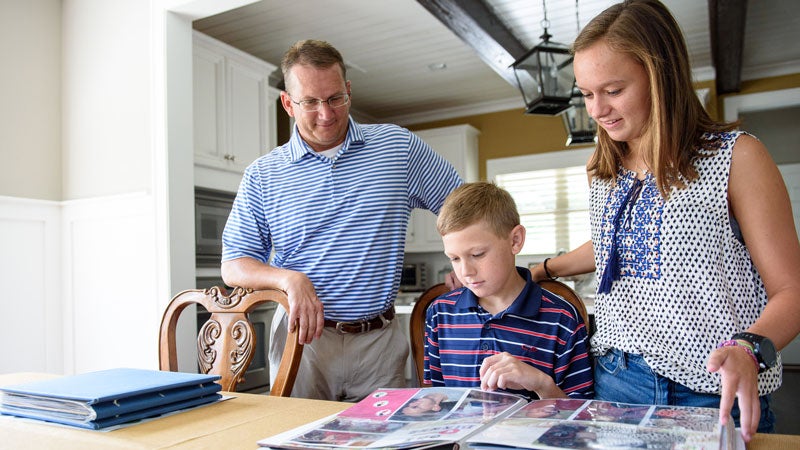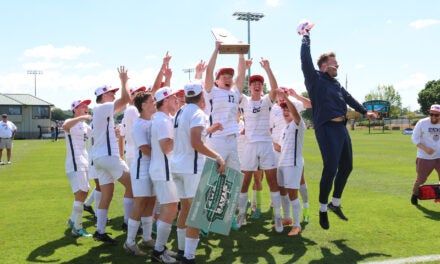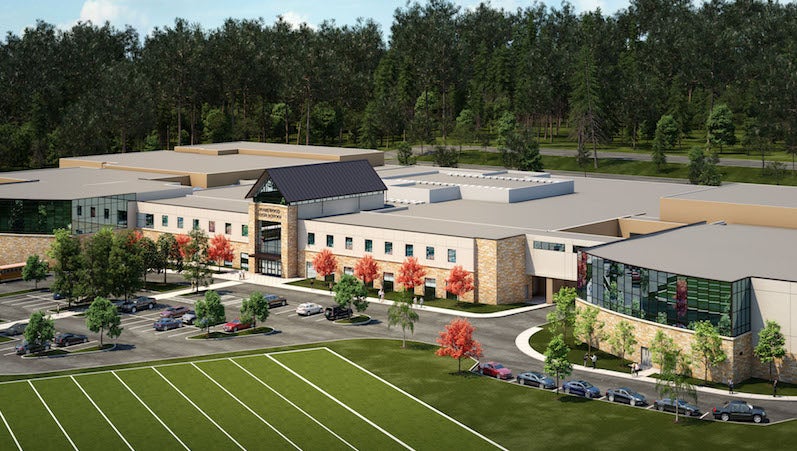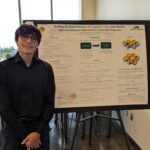The Homewood Middle School gym was filled to the brim on a November morning, and clad in red, white and blue. Months and years later, the hundreds of people present that day might not be able to recall the specific patriotic melodies that filled the space, poignant though they were, and which students spoke, but they will certainly never forget the sea of faces—faces of all ages who had served Army, Navy, Marine Corp, Air Force and Coast Guard, each with a tie to a classmate at the school.
“To our young people,” HMS Principal Jimmie Pearson said to open the school’s annual Veteran’s Day ceremony, “if you can’t decide who you are looking up to, I want you to look right now to our veterans and their families.”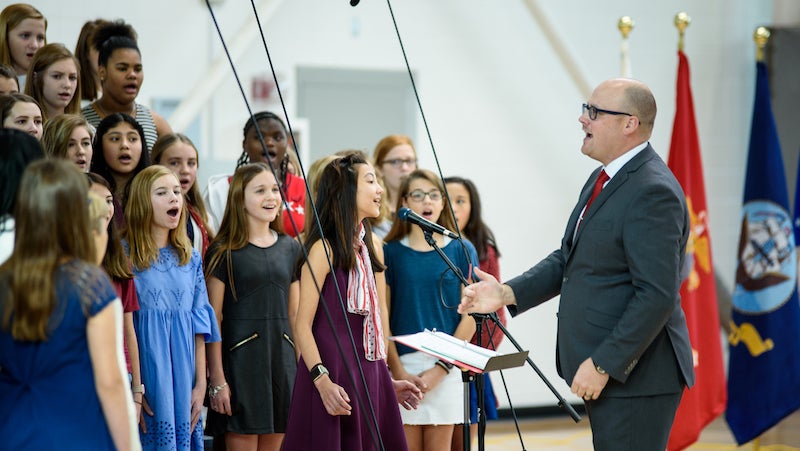
And indeed they all looked up, as each veteran’s name and rank and branch was called out, and as that veteran was escorted to the front of the gym by their child or grandchild, a student or teacher at Homewood Middle. Though this routine was repeated over and over again, the reverent applause that followed was no less resounding than the one before. The one exception came as Cecil A. Parmer—who served in the Army in all five of the major World War II European battles—slowly and deliberately made his way up with his walker accompanied by his granddaughter, teacher Krimson Revis.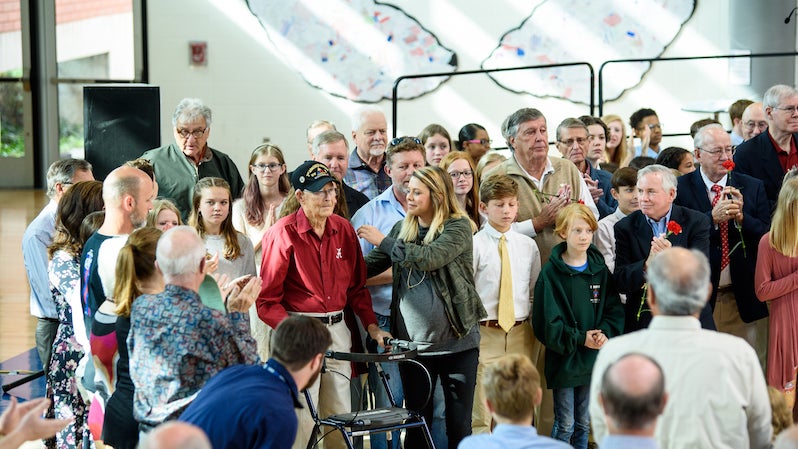
“It is hard for us to comprehend the sacrifice that these individuals made,” teacher Darby Baird said during the ceremony that day. “They put their lives on hold, they left their families and friends, the comfort of their own home, and why? Not for fame or recognition or glory or honor. They made that sacrifice to maintain the American dream for all for future generations.”
And indeed the generational ties present made the moments in the gym that day all the more poignant, as articulated particularly well by retired Marine Corp. Lieutenant Colonel veteran Lea Cockerham—who just so happens to be an assistant principal at the school.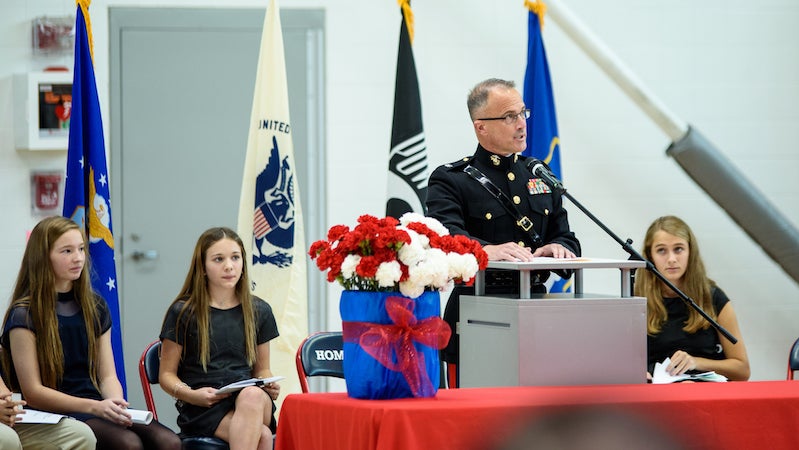
“The Cockerham family has been involved in every conflict going back to the colonial period in the Revolutionary War,” he began as he addressed students and their families. “Most were citizen soldiers, called upon to defend our nation in times of peril.”
Cockerham went on to tell the story of his grandfather meeting his grandmother, he an Army doctor and she an Army nurse, in 1940 in San Francisco. They went on to marry and live in a cottage overlooking Pearl Harbor where they were stationed. It was there that his grandfather heard the explosions on Dec. 7, 1941 and looked down to see the smoke from the first wave of the attacks by the Japanese.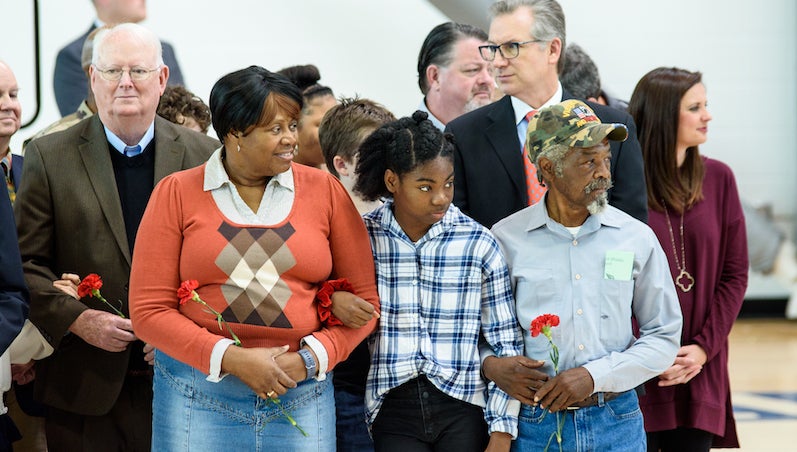
He spent the next three weeks at the hospital operating on the those who had been injured that day and then next four years island hopping in the Pacific on duty before setting up practice in Coosa County, Alabama afterward. For Cockerham, this man ever so rightly earned his place in the Greatest Generation.
“It was his story as well as the story of other generations of relatives that inspired me to join the military,” Cockerham recalled, nearly 80 years after that fateful day in Hawaii. “It wasn’t the war stories from those conflicts but rather the call to service that inspired me to join.”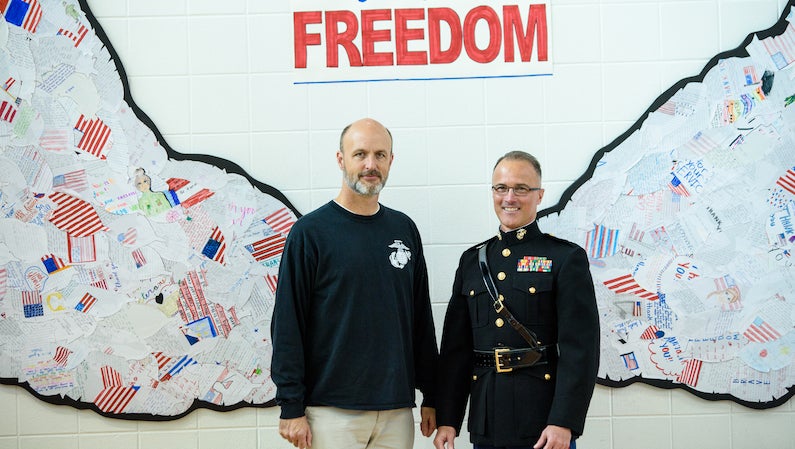
After graduating from Homewood High School, he joined the Marine Corps and would go on to serve 27 years with the military branch. As fate would have it, Cockerham too was first assigned to be stationed in Hawaii, but before he made it there, he was called to the Persian Gulf to help prevent Iraq from attacking Saudi Arabia in what would become the First Gulf War. There he would serve as a fire direction officer in the Battle of Kochi on USS Missouri, a refurbished battle ship from the Pacific campaign of World War II.
Today that ship is anchored next to the USS Arizona in Hawaii, the latter of which serves as symbol of US entry into World War II. If you visit, there’s a video clip that shows Cockerham’s grandfather as part of the exhibit on the USS Arizona, and right next to it in Missouri sits a battle map from Kochi sits in the fire patrol room. “For me the memory of the USS Missouri now forever connects me with the USS Arizona and with it my grandfather’s memory from that day,” Cockerham explains. “My family has a small connection to a special site 4,355 miles away.”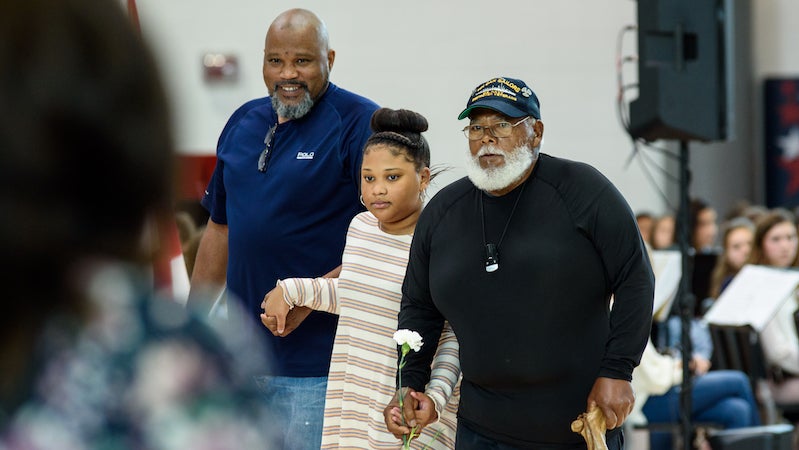
As Cockerham spoke that November day, he looked out over his students, many of them sitting with their own parents and grandparents who had served in the armed forces. Moments later, he’d watch as others of his students played the marches for each branch on trombone, clarinet and drums, and veterans who served in that branch stood to be recognized with yet another round of applause.
But the end of the program turned to not the Greatest Generation, not those who had served in Vietnam or Korea, not Cockerham’s generation who served in the Gulf War, but those who will serve their country in the years to come. The HMS Junior ROTC members in navy blue uniforms led a poignant flag-folding ceremony in front of their peers, calling out the symbolism of each fold.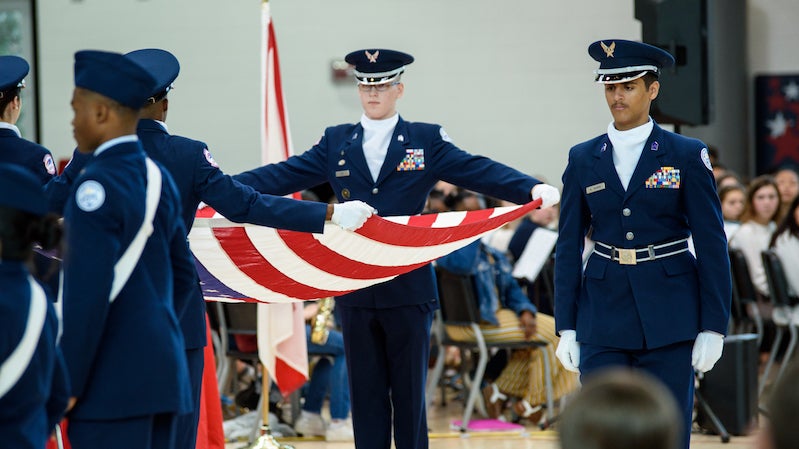
“It is with our hearts that we pledge allegiance to the flag of the United States of America and to the republic for which it stands, one nation, under God, with liberty and justice for all,” the ceremony reads. And it was with their hands that everyone in that room applauded all who have and are today “preserving for us the right, privileges and freedoms we enjoy today.”